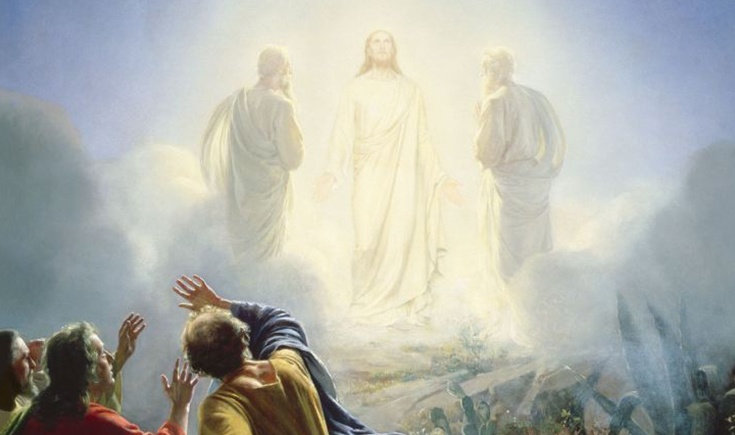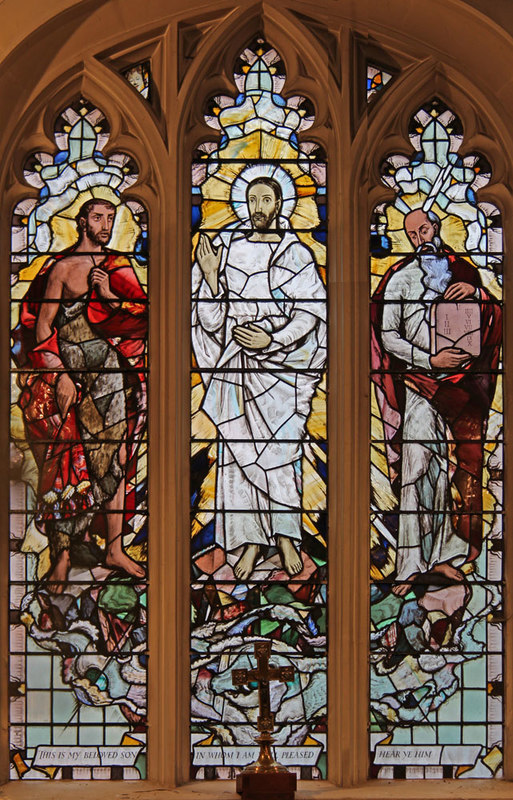sermon preached at St Margaret’s Bramley, 3 March 2019
This week, the General Synod of the Church of England took Evangelism as its main theme. Evangelism in quite a wide sense of commending God to other people through our own experience, as well as in a narrower sense of passing on the teachings of the Church to a new generation. One of the speakers at Synod described Christians as “Trip-Advisers for Jesus”. I presume he meant that we can rate our spiritual experiences and share them with others, just as certain websites allow you to do the same with your holidays. For at its core, evangelism is a personal thing, and we cannot pass on to others what we ourselves have not experienced.
It’s that last word – “experienced” – that I want to dwell on today. Too many people still think that being a Christian is either all about “believing the Bible” (however you choose to interpret that), or “going to church”. But when we actually read the Bible, most of it is about people’s experiences rather than their beliefs or religious practice.
Experiences of God can take many forms – listen again to just two verses from today’s Gospel. “While he was saying this, a cloud came and overshadowed them; and they were terrified as they entered the cloud. Then from the cloud came a voice that said, ‘This is my Son, my Chosen; listen to him!’” (Luke 9:34-35). Hear the experiences there – “overshadowed”, “terrified”, “entered the cloud”, “listen!” Jesus didn’t take those disciples up the mountain to preach another sermon, he wanted them to have an experience, an emotional experience, that would stay with them and change them.
Narrowing it down even further, the one word that I want to focus on from that verse is “cloud”. It’s a word that occurs many times in the Bible. Sometimes the cloud is a literal one, sometimes more symbolic. But always the focus is on experience. Let’s just run through a few of these to get the idea. I expect you will have heard of these people.
Noah no doubt saw rather a lot of clouds during the forty days of rain. But at the end of the story when he and his family were back on dry land, he saw a rainbow in the clouds. And he experienced God saying, “When the bow is in the clouds, I will see it and remember the everlasting covenant between God and every living creature of all flesh that is on the earth.” For Noah, the beautiful colour of the rainbow became a way of understanding God’s faithfulness.
Moses went up Mount Sinai to receive the Law, in thick cloud and smoke, along with fire and a sound like the blast of a trumpet. Earlier in life he had experienced the burning bush in the desert. Out of such experiences, a confusion of sights, sounds and smells, and a terrible sense of awe, came the conviction that God was giving his people instructions for living.
Solomon experienced a cloud filling the Temple – in this case the cloud represents the presence or glory of God. He had to cease his carefully rehearsed acts of worship and instead stand in awe as he sensed the real presence of God. Out of this and other experiences he became the wisest of people. Isaiah had a similar experience in the Temple, which brought him to a place of great humility.
Daniel, in Babylon with the Jewish people in exile, saw a vision concerning the last days, in which “One like a Son of Man came with the clouds of Heaven”. His spirit was troubled and the vision terrified him. But from that experience he recognised that God would give to the Son of Man dominion, honour, glory and kingship for ever.
Coming back to Peter, James and John on the mount of Transfiguration, their own experience of being lost in the cloud with Jesus and his ghostly companions also terrified them, to the extent that they told no-one about it until after the Resurrection when it all started to make sense, that Jesus was in fact a new lawgiver like Moses, a new prophet like Elijah, and also Daniel’s “son of man”. Sometimes it’s only long after an experience that we can reflect on it and make sense of it.
I suggest that in all these experiences of the cloud, God is wanting people to be aware of what they experience (that is, by sight, sound, smell or any other sensation), and what the feel (that is, in their emotions)? Out of that, he asks the question, “who do you say that I am?”
Noah may have responded to that last question with “The One whose Covenant is sure, never again to destroy mankind”. Moses would have said “the Lord our God, who brought us out of Egypt, out of the land of slavery”. Solomon – “The Lord whose glory fills the Temple”, Daniel – “The Ancient of Days”. Jesus’ disciples were given the words by the voice from the cloud – “This is my Son, my Chosen”.
Of course, few of us will ever experience anything so dramatic as those prophets and apostles. What might experiences of the cloud of God’s presence look like in practice for you or me? I can’t speak for you, because the glorious truth is that everyone’s experience of God is personal and unique. I can only speak for myself, so here are a few times in my own journey of faith when clouds have featured prominently.
The first time I flew in an aircraft, as a child, with a heart filled with wonder I looked down on the clouds. Grey and flat from below, above they billow like cotton wool, reflecting the full light of the sun. No human had seen this before we learnt to fly. At that time, aged ten, I would not have called myself a Christian – I just hadn’t given any thought to the question yet – but looking back on that and other times I’ve flown, I would reply to the question, Who do you say that I am, by saying “the Creator who made all things for Your glory. You delight in that which humans have not yet seen and have prepared what we cannot imagine.”
Years later as a young adult, I again found myself above the clouds, this time on a mountain top in France. I was using that holiday to explore a sense of vocation. I had walked though the small hours of the night with a local guide to reach the top of the mountain not long after sunrise. What I saw was cloud that covered the valley below us. As the cloud lifted in the morning sun it revealed a lake far below. In the silence birds flew round us. We stayed there for some time, rejoicing at the beauty of this scene. I thanked our guide, who led us through the cloud and up the mountain. To God’s question Who do you say that I am? I replied, “the Guide who can be trusted to lead me to what I do not know, revealing your beauty along the way.”
Some years later again, when Linda and I were newly engaged, we stood together one evening by the kitchen sink, looking out as clouds gathered at dusk, glowing ever deeper with blazing red. Never had we seen such a sunset. We stood in awe of our Creator and in love with each other. Our answer to the question then was, “You are the God of power and passion. You brought us together and we will trust you in our relationship.” Like Noah, this sign in the heavens became a personal sign of God’s love.
Of course, not all emotions are happy ones, not all experiences are pleasant, and life has its ups and downs. Going back a few years, I went on holiday by myself to get over the end of a previous relationship. Walking alone across cloud-covered hills, I found the mist surrounding me to be a consolation at a time when I felt depressed. God’s presence in solitude embraced me, and to the question “Who do you say that I am?” I could reply “the constant lover, the One who never turns away but always understands.”
Those, then, are some examples of how God’s presence can be felt, experienced, enjoyed (or not). This imagery of clouds is just one that happened to resonate with today’s readings. There are many other kinds of experience. What I would encourage you to do is ponder how your own experiences, everyday or out of the ordinary, of the world around you, can speak to you of God’s presence.
We are not disembodied minds, we have God-given bodies that sense the world around through touch, taste, smells, sights and sounds, sense our own minds through our emotions, and sense also God’s spirit within us. The truth is that it is only in experiencing God with and through our physical senses and emotions, that we can come close to saying that we know him.
Coming back from the sublime to – I daren’t say the ridiculous, but the mundane, with the General Synod and its discussions on evangelism. It is when we are able to make sense of our experiences and share our insights with other people, that we are able to engage in the sort of evangelism that the Archbishop of Canterbury was talking about this week when he said this –
“When we talk of evangelism and discipleship, we are talking about a radically, differently shaped Church, which starts with being filled afresh with the Spirit of God, consumed with the love of God for us, for the world, and obsessed by the vision of God for the world, which we seek to change to show the shape of his love.”
So hang on to those moments when the world around you was suddenly lit up with the flame of God’s presence, when the place you were worshipping became for a moment filled with the glory of God, or conversely when the quietness of a misty day or a silent place touched you with his gentleness. Sharing those experiences with other people may be the best form of evangelism you can offer.
Copyright (c) Stephen Craven 2019
Biblical references
Noah: Genesis 8:1-9:17
Moses: Exodus 19:9-25
Solomon: 1 Kings 8:9-13
Daniel: Daniel 7:1-13
Jesus and the disciples: Mark 9:2-9 / Luke 9:28-36

